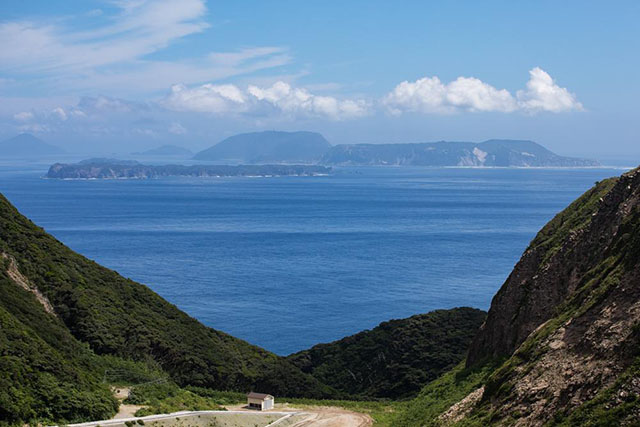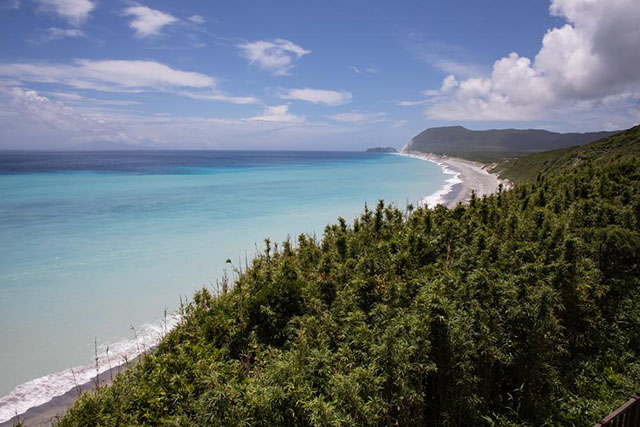
-
The Izu Islands are an archipelago of volcanic islands (nine of which are currently inhabited) and lie off the Izu Peninsular on the south east coast of Honshu. They are actually part of the Tokyo administrative area as well as forming a part of the Fuji-Hakone-Izu National Park. The islands themselves were formed thousands of years ago by the eruptions of undersea volcanoes, and each island has a unique character. With easy access from Tokyo the Izu Islands make a great short getaway from the city for those who enjoy idyllic rural scenery, fresh seafood, unspoilt beaches and outdoor hot springs.
![]()
Izu Oshima is the largest of the islands and just 22km (14 miles) from the mainland, making it the closest and most visited of all the islands. Mihara (758m) is a distinctive and fairly active volcano which lies at the centre of the island. It last erupted in 1990 but is now considered safe to climb, with a number of short (45mins to 1hr) hiking trails leading to the impressive caldera at the top.
![]()
The island is blessed with a number of black volcanic beaches, particularly on its north and western coasts, with towering volcanic cliffs dropping down to the sea close to the ring road in the southwest of the island.
![]()
A number of areas are designated as geoparks to help protect Izu Oshima’s unique natural environment, and many tourists like to bathe in the soothing waters of the island’s hot springs. Two of the most popular are Miharayama Onsen at Oshima Onsen Hotel, and Motomachi Hama-no-yu, a mixed-gender open air bath near the sea (swimsuits required).
There are daily flights to Izu Oshima from Chofu Airport (Tokyo), as well as regular and high-speed ferries from Takeshiba Ferry Terminal in Tokyo (2hrs, around 4000 to 8000 yen) and from Atami in Shizuoka (1hr, around 5000 yen).![]()
- Izu Oshima
-
-
- Tokyo Oshimamachi
-
-
-
- 0499222177
-
View All
Nijima is a smaller island (24 square km) south of Izu Oshima and about 160km away from Tokyo. It is a sleepy and laidback island with beautiful white sand beaches and a strong surfing culture. One of the most popular beaches for both surfers and sunbathers is Maehama Beach on the west side of the island, from where on a clear day it is possible to catch a glimpse of Mt Fuji.
![]()
Overlooking Maehama Beach is Moyai Hill where over 100 stone sculptures can be found, with some people likening Nijima to Easter Island! There are also a number of free outdoor hot springs dotted around the island.
![]()
Kozushima is an even smaller island to the southwest of Nijima and is known for its abundant natural wonders and hot springs. Its star attraction is Mt. Tenjo, a small mountain with an intriguing volcanic summit and a number of trails suitable for everyone from beginners to more serious hikers. There are many wonderful diving and snorkelling spots all around the island, and the clear skies are perfect for stargazing. There is only one village on the island, but camping is a viable option for those with a taste for the outdoors.
![]()
At the southern end of the island chain is Hachijojima, around 300km south of Tokyo. The endangered Hachijo dialect is still spoken here by a few residents, and the island has a varied landscape of volcanoes and rugged coastline.
Even further south again is the intriguing and isolated Aogashima, a small island almost entirely comprised of a round volcanic caldera jutting up straight from the sea. Due to its rugged coastline boats often have trouble docking so the most reliable way to visit is by helicopter!Forte
Okago 2502 2F Izu Islands

All of the islands can be reached by ferries from the mainland, with daily flights to most of the larger islands too.






 Go here
Go here







